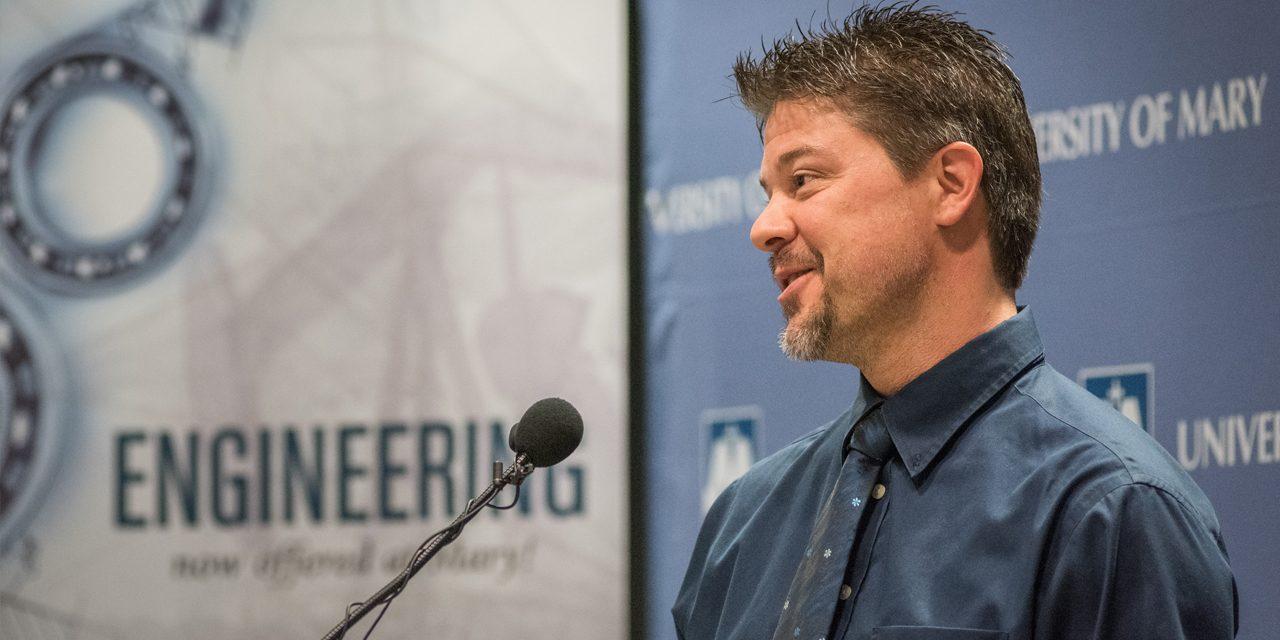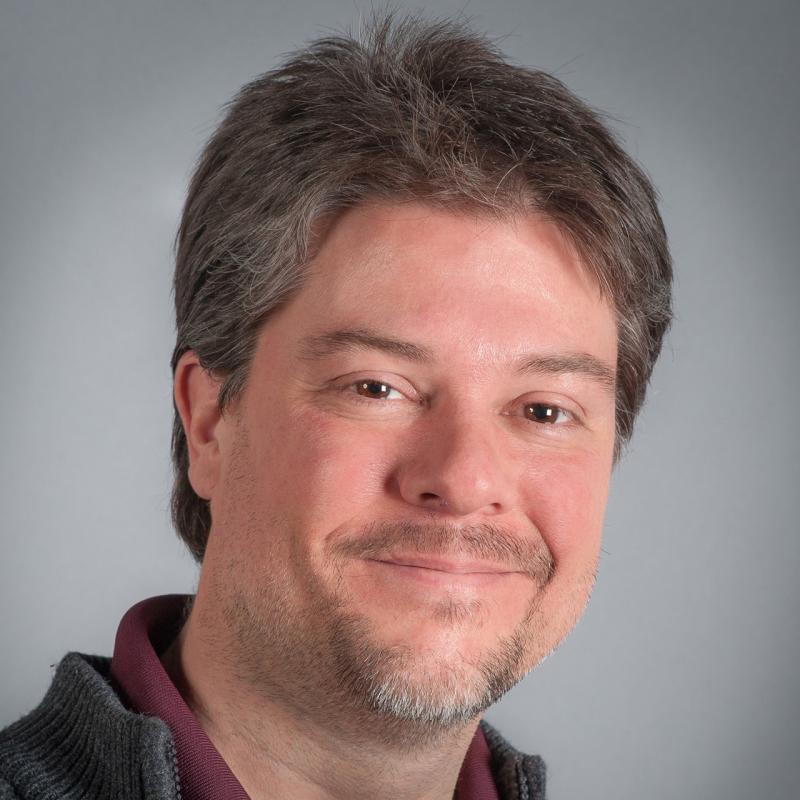University of Mary Promotes Dr. Terry Pilling as New Dean of the School of Engineering


dean of the School of Engineering
University of Mary
BISMARCK, ND — Without any need for a nationwide search, the University of Mary announced it has appointed Dr. Terry Pilling as dean of the School of Engineering. Pilling brings nearly 25 years of engineering, research, and higher education experience to the position — including the last five years at the University of Mary as associate professor (2015-2016), and most recently as chair of the School of Engineering.
Pilling becomes the first dean of the new School of Engineering, practically building the entire program himself, from the ground up, since arriving on campus five years ago. In 2015, the University of Mary announced its intent for a new School of Engineering and began to dramatically increase technical course offerings in the fall of 2016 under Pilling’s direction and guidance. Since then, Pilling has spent the last half decade soliciting opinions from local and regional firms, touring other colleges and universities, and listening to his own students, as to what they believe would make up the most ideal, most comprehensive, and most student and faculty friendly engineering program. Pilling took all that advice to heart, along with his own 25 years of experience as a professor, nuclear physics researcher, engineering firm executive, and scientist, in order to help design and build what he and the University of Mary believe is one of the most modern, teaching-centered, student-friendly, state-of-the-art engineering facility in the United States.
The 2020 ribbon cutting ceremony at University of Mary’s new School of Engineering facility
“Dr. Pilling has devoted the last five years of his life to the success of this engineering program through input from the engineering community and his students so he could create the best possible curriculum and engineering facility for western North Dakota,” said Dr. Diane Fladeland, vice president for Academic Affairs at the University of Mary. “Terry took the feedback and not only architected the program, but helped design the new state-of-the-art facility that opened this year — 20,000 square feet dedicated to the instruction of civil, electrical, and mechanical engineering along with computer science, and construction management programs. He made it his top priority to prepare our students for engineering internships and careers to help quell a serious engineering brain-drain in western North Dakota, and beyond. He has nurtured relationships with many of the companies that do business here and encouraged them to hire our students for summer internships and semester-long co-ops while they are completing their degrees.”
Pilling listens to details of behind engineering student’s project
Pilling’s lifetime of hands-on experiences and scholarly knowledge of math, science, physics, research, computer software, electronics, and much more, have put him on the cutting-edge of engineering, technology, teaching methods, and course design, for what’s quickly become one of the premier School of Engineering programs.
Pilling has given guest presentations all over the world, from “High Energy Physics” in Russia, to the “Physics of Football” in North Dakota. He lived and worked as a postdoctoral researcher at the Joint Institute for Nuclear Research (JINCR) in Dubna, Russia, and the Institute of Theoretical and Experimental Physics (ITEP) in Moscow. Pilling published nearly two dozen research works in top peer-reviewed scientific journals, in addition to a dozen corporate publications on wind projects. From 2008 to 2011, as chief operating officer of Crown Butte Wind Power, he helped develop and lead the first utility scale wind farm in either of the Dakotas. He helped replicate that plan in Montana with 13 more wind farms there, and in North Dakota. As a postdoctoral research associate, and with basic knowledge of the Russian language, Pilling conducted scientific research in “Theoretical High Energy Physics to solve Quantum Field Theory” equations. Before that, he edited, vetted, and corrected manuscripts of science books as the science editor of House of Knowledge Publishing Company in London, England.
One of Pilling’s earlier career experiences in 2006 took him to the Joint Astronomy Centre and the James Clerk Maxwell radio telescope on Mauna Kea, Hilo, Hawaii. As a team member, he helped write the control systems software that directs the rotation, aiming and graphical user interface that operators in the control room use on their monitors to power the JCM radio telescope. In 2019, that telescope, along with seven other ground-based telescopes around the world, together known as the Event Horizon Telescope (EHT), collaborated to capture the first photo of the black hole in space, thanks to the software Pilling helped write.
Since 2013, he’s been the editor of the Northern Plains Ethics Journal, and is referee for the “Journal of Engineering Education,” and the “Physics Letters B.”
Pilling observes engineering student’s project demonstration
Pilling earned the National Science Foundation EPSCoR Research Fellowship, and was nominated for the Gunkelman Award and Odney Award from North Dakota State University where he received his PhD in high energy particle physics and gravitation. He obtained his master’s degree in theoretical and experimental nuclear physics from the Saskatchewan Accelerator Laboratory following a bachelor’s degree, with honors, in physics and engineering physics from the University of Saskatchewan.
About the University of Mary
True to its motto “lumen vitae”—The Light of Life—the University of Mary offers education for the whole of life through cutting-edge professional programs and graduate programs animated by moral courage and leadership in chosen professions and service to the community. A private, co-educational Catholic institution, the University of Mary welcomes students of all faiths and backgrounds.
A Christian, Catholic, Benedictine institution founded in 1959 by the Benedictine Sisters of Annunciation Monastery, Mary offers nearly 60 bachelor’s, 15 master’s, and four doctoral programs—in education, nursing practice, occupational therapy, and physical therapy. The 19-sport Athletic Department adheres to its Greatness Through Virtue mission under the governance of the National Collegiate Athletic Association (NCAA) and American Collegiate Hockey Association (ACHA) conferences. With more than 3,800 students, Mary has locations in North Dakota, Montana, Kansas, Arizona, Rome, Italy, as well as vibrant online offerings. For more information, visit www.umary.edu.
